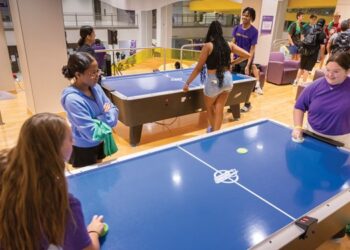No matter how old your recreation center, it is always a challenge to keep your facility fresh and respond to changes in the landscape of fitness. Newer programs, such as specialized group studios and functional training, have firmly taken their place in the fitness space. Add to that the fact that your facility looks older each year. Additionally, funding for deferred maintenance to keep the facility functioning can be hard. Making requests for investment in building renovations can be even harder, especially if the needs and benefits cannot be clearly justified and communicated.
This leads to small improvements that are often executed out of annual operations or improvement budgets. We are all familiar with the racquetball court conversions to various new programs. While this provides a new program element, this approach rarely improves the overall user experience. Over time these types of isolated changes can erode the facility flow that was crucial to the initial vision and function of the facility.
How can you keep up? Begin the process with a facility master plan for incremental improvements. A facility master plan can set a holistic road map for the future that includes:
Evaluation of the current state of your facility. You have to understand how the building is serving the campus community: what is outdated, what can be improved and what may be added or replaced?
Program needs and opportunities. Prioritize improvement projects and their scopes. Which goals can be achieved easily, which ones are more difficult? How can you take advantage of the current spaces, thinking about them in new ways?
Time-frame. What is the period of time in which the plan is covering? How are each of the improvements phased into manageable pieces so they can be realistically implemented?
Facility flow and impression. How do the incremental changes work together to achieve a cohesive future vision that improves the experience, energy, program offerings and comfort for the users?
Preliminary budgeting. The vision can only be implemented if there is funding to back it up. Realistically, what are the improvements going to cost? Don’t forget to account for escalation for the time frame of the plan.
How does the master plan help you move forward? Remember the goal is to have a plan that you’re able to implement in bite-size steps that all work together to reach a goal. Make use of every dollar so that improvements are intentional and not reactionary.
Once you have a plan, and a timeline, begin to share it with your stakeholders. Let everyone know what you are hoping to achieve and why, to generate support and excitement. Transformation change can happen over time, and each piece can be celebrated to show a commitment to serving the ever-changing needs of the campus community in a fiscally responsible way.
Sal Canciello is a principal at S3 Design Inc, an architecture firm specializing in planning and design for recreation and athletics. He can be reached at scanciello@s3design-inc.com or visit s3design-inc.com.










